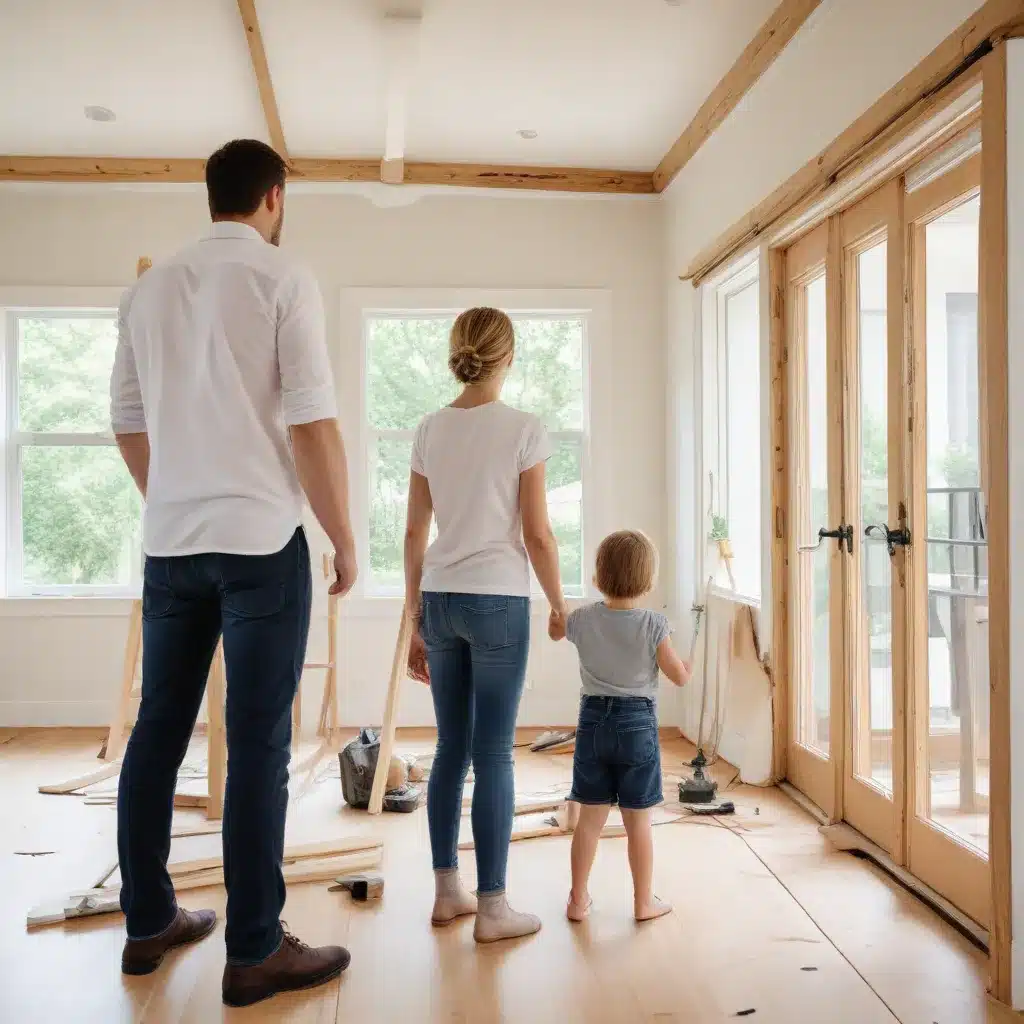
Sustainable Strategies for Family-Friendly Home Renovations
Renovating a home to meet the evolving needs of a growing family can be both exciting and overwhelming. As an experienced home improvement consultant, I’ve seen firsthand how sustainable design choices and family-centric planning can transform a house into a vibrant, functional, and eco-friendly living space. Whether you’re tackling a full home remodel or simply want to make budget-friendly updates, prioritizing long-term livability and environmental impact is key.
Environmental Impact of Home Improvements
When it comes to home renovations, the materials and construction methods you choose can have a significant impact on your property’s carbon footprint. Opting for eco-friendly building materials, incorporating renewable energy solutions, and implementing effective waste reduction strategies are all crucial steps towards creating a more sustainable home.
Eco-Friendly Building Materials: Look for products with high recycled content, low embodied energy, and minimal off-gassing. Materials like reclaimed wood, bamboo, cork, and recycled plastic can add character while reducing environmental impact. Avoid volatile organic compounds (VOCs) found in many paints, adhesives, and finishes by selecting zero-VOC alternatives.
Renewable Energy Solutions: Considering solar panels, geothermal heating and cooling, or even a small-scale wind turbine can help your home generate its own clean power. These investments not only reduce your reliance on fossil fuels but also provide long-term energy savings. If a full renewable energy system is not feasible, explore passive solar design principles to maximize natural light and temperature regulation.
Waste Reduction Strategies: During the renovation process, aim to divert as much construction waste as possible from landfills. Donate or resell gently used building materials, appliances, and fixtures. Carefully plan your project to minimize material waste, and research local recycling or composting options for any unavoidable debris.
Family-Centric Design Principles
When renovating a home with a growing family in mind, functionality and inclusivity should be at the forefront of your design decisions. Thoughtful layouts, accessibility features, and multifunctional spaces can create a living environment that adapts to your family’s changing needs over time.
Functional Layouts for Daily Life: Prioritize open-concept floor plans that encourage family interaction and allow for easy supervision of young children. Strategically place the kitchen, dining, and living areas to facilitate meal preparation, homework sessions, and quality time together. Incorporate dedicated storage spaces for toys, sports equipment, and school supplies to maintain a clutter-free atmosphere.
Inclusive Accessibility Features: Ensure your home is accessible to all family members, including those with mobility challenges or special needs. Consider wide doorways, level thresholds, adjustable countertops, and accessible bathroom features like curbless showers and grab bars. These thoughtful additions can make your home more comfortable and inclusive, even as your family’s needs evolve.
Multifunctional Spaces for All Ages: Design rooms that can serve multiple purposes and adapt to your family’s changing dynamics. A playroom or homework station for younger children can later transition into a teen lounge or home office. Flexible furnishings and storage solutions allow you to easily reconfigure spaces as your family grows.
Financial Planning for Renovations
Balancing your budget with your renovation goals can be a delicate dance, but with the right strategies, you can create a beautiful, sustainable home that aligns with your family’s needs and financial constraints.
Budgeting and Cost-Saving Measures: Carefully research material and labor costs to create a realistic renovation budget. Look for opportunities to DIY where possible, and seek out secondhand or discounted materials to stretch your dollars further. Consider the long-term energy-saving benefits of eco-friendly upgrades when weighing your options.
Financing Options and Incentives: Explore home equity loans, personal loans, or refinancing to access funds for your renovation project. Many local and federal government programs offer tax credits, rebates, or subsidies for energy-efficient improvements, renewable energy installations, and accessible home modifications. Research available incentives in your area to maximize your savings.
Long-Term Return on Investment: While the initial investment in sustainable renovations may be higher, the long-term benefits can be substantial. Improved energy efficiency, increased property value, and reduced utility costs all contribute to a positive return on your renovation investment. Additionally, creating a healthier, more comfortable living environment for your family is an invaluable asset.
Enhancing Home Comfort and Livability
Beyond the financial and environmental considerations, your home renovation should also focus on improving the overall comfort, indoor air quality, and livability of your family’s living space.
Indoor Air Quality and Ventilation: Ensuring proper ventilation and minimizing indoor air pollutants can have a significant impact on your family’s health and well-being. Opt for low-VOC paints, formaldehyde-free cabinetry, and natural fiber insulation to promote clean indoor air. Integrate mechanical ventilation systems or strategically placed operable windows to facilitate air circulation.
Thermal Efficiency and Insulation: Improving your home’s thermal performance can reduce energy consumption and keep your living spaces comfortable year-round. Upgrade insulation levels in walls, attics, and crawl spaces to meet or exceed current building codes. Consider high-performance windows, air sealing, and energy-efficient HVAC systems to enhance your home’s thermal envelope.
Lighting Design and Natural Illumination: Thoughtful lighting design can create a warm, inviting atmosphere while also reducing energy usage. Prioritize natural daylighting by positioning windows and skylights to maximize sunlight exposure. Supplement with energy-efficient LED fixtures and dimmable controls to provide flexible, task-oriented lighting.
By integrating sustainable strategies, family-centric design principles, and a pragmatic financial approach, your home renovation can transform your living space into a vibrant, eco-friendly, and adaptable haven for your growing family. For more inspiration and expert guidance, be sure to visit Reluctant Renovator, a leading resource for homeowners embarking on their renovation journeys.



